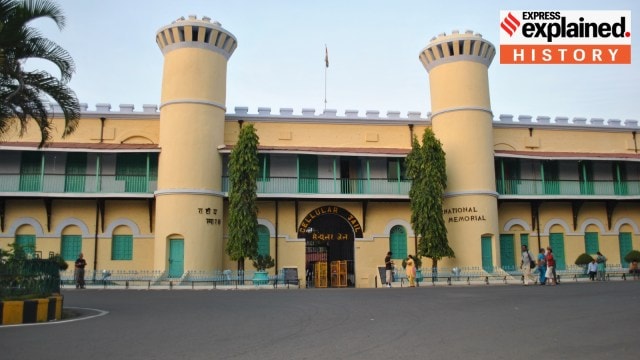Port Blair, the capital city of Andaman and Nicobar Islands, will now be known as ‘Sri Vijaya Puram’, Union Minister Amit Shah said in a post on X on Friday (September 13). He said the decision of changing the name was inspired by the vision of Prime Minister Narendra Modi, “to free the nation from colonial imprints”.
Shah added that “while the earlier name had a colonial legacy, Sri Vijaya Puram symbolises the victory achieved in our freedom struggle and the A&N Islands’ unique role in the same.”

How did Port Blair get its name?
The city of Port Blair is the entry point of the Andaman and Nicobar Islands. It was named after Archibald Blair, a naval surveyor and lieutenant in the Bombay Marine. Blair was the first officer to carry out a thorough survey of the Andaman Islands.
After joining the Bombay Marine in 1771, Blair set out on a survey mission along the coasts of India, Iran, and Arabia next year. By the late 1780s, he had participated in a number of survey missions, including those in the Chagos archipelago, Diamond Harbour located in the south of Calcutta, and along the Hooghly River.
In December 1778, Blair left for his first surveying voyage to the Andamans from Calcutta, along with two ships, Elizabeth and Viper. The expedition, which lasted till April 1779, took him around the west coast of the island, thereby sailing north along the eastern coast he reached the natural harbour which he initially named as Port Cornwallis (after Commodore William Cornwallis, Commander-in-chief of the British Indian Army). Later the island was renamed after him. Blair was immediately aware of the significance of his discovery and wrote a detailed report of his survey, which was received very positively by the East India Company (EIC) officials.
Soonafter, the EIC decided to colonise the islands, mainly to establish as a safe harbour from which it could check the activities of the Malay pirates. The island was also to serve as a refuge for shipwrecked people and a place where their officers could take shelter in case of hostilities with other powers. With several convicts being transported to the islands to serve unpaid labour, the island soon became a penal colony.
In December 1792, however, the colony was shifted to the north east part of Andaman to the newly established Port Cornwallis for purely strategic reasons. But the new colony could not sustain for too long on account of severe disease and death there. The EIC stopped operating it in 1796.
Story continues below this ad
The Revolt of 1857 resulted in a large number of prisoners for the British, prompting the immediate renovation and resettlement of Port Blair as a penal colony. Most of the convicts received life imprisonment at Port Blair. Several of them were hanged, while many died due to disease and the degrading conditions in the region.
With the strengthening of the Indian Independence Movement in the late 19th century, a huge cellular jail was established here by 1906. Popularly known as Kaala Paani, it housed several freedom fighters, including Veer Damodar Savarkar.
Meanwhile, Blair had already returned to England in 1795 and is known to have read an account of the Andaman Islands before the Royal Society of London in 1799.
Why was Port Blair’s connection with the imperial Cholas and Srivijaya?
Story continues below this ad
Some historical records suggest that the Andaman Islands were used as a strategic naval base by the 11th century Chola emperor, Rajendra I to carry out an attack on Srivijaya, which is in present day Indonesia. As per an inscription found at Thanjavur dated to 1050 CE, the Cholas referred to the island as Ma-Nakkavaram land (great open/ naked land), which possibly led to the modern name of Nicobar under the British.
As noted by historian Herman Kulke in his co-edited edited book, Nagapattinam to Suvarnadwipa: Reflections on the Chola Naval Expeditions to Southeast Asia (2010), the Chola invasion of Srivijaya was a unique event in the history of India and “its otherwise peaceful relations with the states of Southeast Asia which had come under India’s strong cultural influence for about a millennium.”
Several scholars have speculated about the reason for the attack on Srivijaya. Nilakanta Sastri, in his work on the Cholas had suggested that “we have to assume either some attempt on the part of Srivijaya to throw obstacles in the way of the Chola trade with the East, or more probably, simply a desire on the part of Rajendra to extend his digvijaya to the countries across the sea, so well known to his subjects at home, and add luster to his crown.” Others like the American historian G W Spencer interprets the Srivijaya expedition as to be part of the Chola expansionism which had been ongoing for decades culminating in wars with other empires of South India and Sri Lanka.
According to inscriptional records, after attacking Srivijaya, Rajendra I captured king Sangrama Vijayottunggavarman, and looted a large amount of treasures from the Buddhist Empire, including the Vidhyadara Torana, the jewelled war gate of Srivijaya.








































